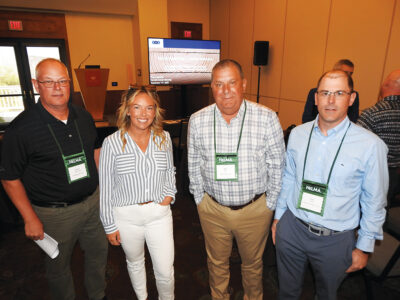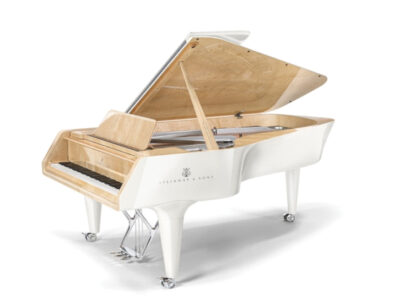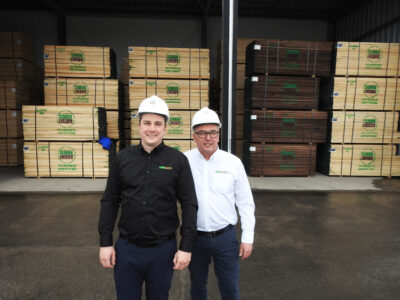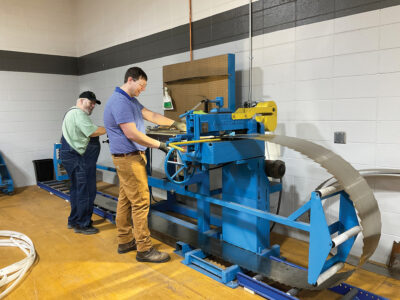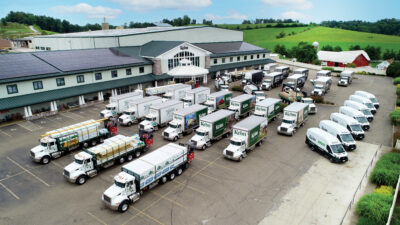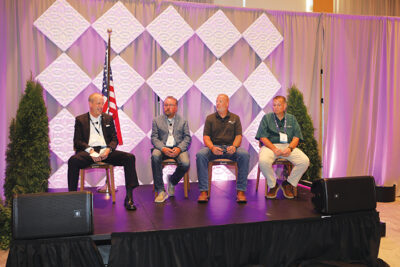West Coast Business Trends

“It’s A Strange Time” On The West Coast
By Zach Miller
2025 was a volatile year for the West Coast softwood lumber industry, shaped by a complex set of supply, demand, and regulatory trade pressures. In response some mills have begun to temporarily curtail production to counter the weakening demand from the North American housing and construction sectors. It seems the one common sentiment is that, successful or not the year has been a grind for manufacturers on both sides of the border. The following is what a few West Coast producers had to say:
Dean Garofano of Delta Forestry Group, Pitt Meadows, BC said, “The perfect storm has hit the coastal industry. Manufacturers produced extra volume this past summer in anticipation of the increased duties, and many distributors brought in extra volume to circumvent any price increases. Since then, the U.S. economy has slowed in general. Now with inventories high, the slower fall and winter months upon us, the increased duties and now a 10 percent tariff recently announced, demand has greatly diminished. Delta Forestry Group has been focusing more on our Hemlock and Fir programs these past months, where a larger percentage of sales go offshore or stay in Canada.”
Garofano continued, “Right now, it is a challenge to figure out where the U.S. market pricing is. It may take until next spring, when demand picks up, and inventories are more in check before the true market numbers emerge. Only then, will we know how much of the increased duties and tariffs the market will absorb. On the logging side, Cedar, the highest value specie on the coast, has seen prices reduce as the lumber market shrinks. With Cedar logs values down, loggers are looking to curtail and pull the plug on projects that are now under water. The Coastal log harvest is already down 13 percent from last year and the decline will likely continue and get worse through the end of this year. This winter, it will be a herculean task, for coastal manufacturers to keep sawmills and remanufacturing plants running if 45 percent duties and tariffs continue.”
Some scarcity, tariffs, uncertainties are challenges West Coast lumber reps strive to overcome, but some see good orders, too.
John McDowell of Oregon Industrial Lumber Products, Springfield, OR said, “There is no balance between supply and demand currently. Due to the new countervailing duties, crazy U.S. politics, and a Canadian Logging strike that is taking place everything is off balance. What little wood that is available in Canada is too expensive to bring down and sell. Most U.S. companies cannot plan due to constantly changing duties and tariffs, so they are not purchasing anything that they do not need immediately. Some items are tight and there is not enough supply for demand. Other items are beginning to pile up due to companies holding off for clarity. Lastly, some items are both scarce and yet to expensive to be desirable in our market. VG clears in Red Cedar and other clears are a great example. I have lots of people contacting us looking for VG clears until they hear the pricing and the response is ‘I can’t afford to pay that.’ It’s a strange time.”
McDowell continued, “As of this writing, next week we are supposed to add another 10% on to wood coming from Canada in the form of a Tariff. This will not only make wood coming from Canada more expensive than the already 35-45 percent we are currently at depending on species. A common side effect of more expensive imported wood is to enable and embolden U.S. timber land holders to continue to raise prices on their logs therefor driving up domestic prices on all wood in the U.S. that are not a full-blown commodity. We see pricing for material in softwood uppers all over the place as some companies are dumping wood in a panic to free up cash and others are protecting themselves against future increases on replacement cost. Most of my customers don’t know what to make of all the issues mentioned above. The common report is that things are either slower than usual or completely dead. Most orders we see are for exact projects with little material being bought for inventory. The logging strike in Canada is affecting what wood is available. Also, companies in the U.S. are struggling with planning and knowing what to expect for future costs. This is causing them to act extremely cautiously and limit exposure by carrying or purchasing as small an inventory of wood as possible.”
McDowell finished with this, Our business currently is a 5 or a 6 on a scale of 1 through 10. We have just recently received some good orders but overall, it seems unlikely to have a large order file going forward for the next couple of months. It’s going to be a tough winter for most of us in the softwood lumber industry until some consistency and clarity come of our supply costs and availability.”
An unnamed West Coast remanufacturer, Portland, OR said, “As a company we will most likely miss our projections for this year, not to say it was a particularly bad year for us, we are profitable we just didn’t anticipate the countervailing anti-dumping rate increases along with the, for now additional 10 percent tariff. All things considered the year was fine, our customers had a good summer but are now not very interested in stocking lumber, and asking us to be the bank, instead of 10,000 ft. orders it’s 2,000. The products we purchase out of BC particularly high grade Cedar are hard to come by and extremely expensive. Hemlock is almost the price of Fir, I’m taking a step back from that market. It looks more and more like Canadian producers are in trouble as it’s going to get very hard to compete with U.S. manufacturers with the tariff duties combination. The market is fairly weak, lack of demand, high prices and heading into winter doesn’t help. We have some new products we’re excited about coming online shortly, there’s always opportunities even in weak markets, just takes a little more work. Overall I would rate this year an eight out of 10, we’re hopeful and optimistic moving forward.”



